
Introduction
The ADATA SE920 1TB External SSD Storage drive is ADATA’s fastest external portable SSD storage in its lineup, based on USB4 40Gbps Type-C interface, and speeds of up to 3,800MB/s read and 3,700MB/s write. In today’s review, we’ll take a look at this external SSD for portable storage and see how it performs running our battery of SSD performance testing. We’ll also try out its neat little trick it has up its sleeve, with an outer shell that can be actuated to activate a built-in micro fan for increased cooling during intense usage.
ADATA is a well-known manufacturer of memory, storage, and computer cases since 2001. Under ADATA’s consumer External SSDs/External Hard Drives, you’ll find many types of external storage with different interface options, capacities, form factors, and performances. The ADATA SE920 is currently the fastest external SSD storage device ADATA offers in its lineup, based on the USB4 40Gbps interface, and read/write speeds of 3,800MB/s read and 3,700MB/s write.
The ADATA SE920 is, in fact, the only USB4 external SSD storage device at this time, from ADATA. There are many models below this, such as the SD810, the next fastest drive, which is a USB 3.2 Gen2 x2 20Gbps device at 2,000MB/s read/write. There are also several flavors of USB 3.2 Gen2 10Gbps drives as well.
ADATA SE920 1TB External Portable SSD
The ADATA SE920 represents the highest performing model based on USB4 40Gbps in ADATA’s lineup, utilizing a Type-C USB interface. The ADATA SE920 comes in capacities of 1TB, 2TB, and 4TB. The device is backward compatible with USB 3.2 and USB 2.0 and supports Thunderbolt 3 and 4. The current USB4 transmission performance is rated at up to 3,800MB/s on the SE920.
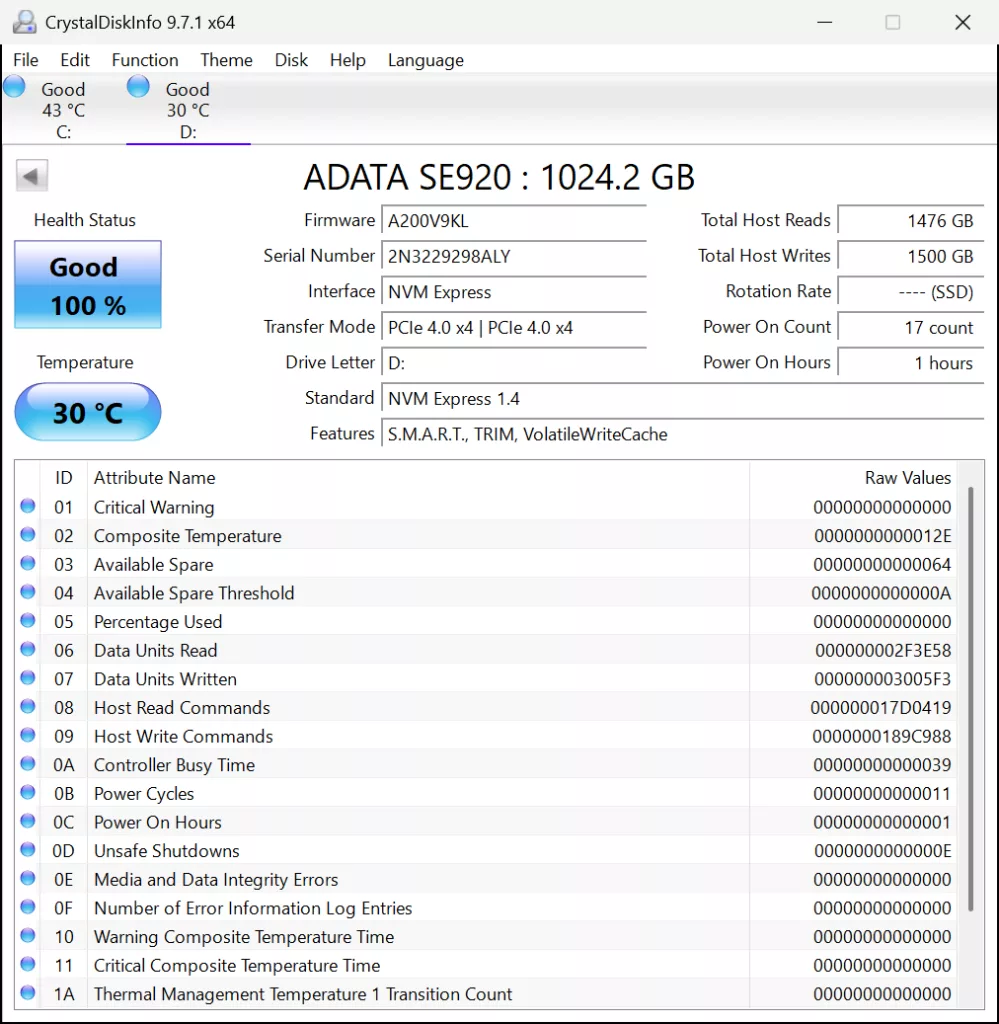
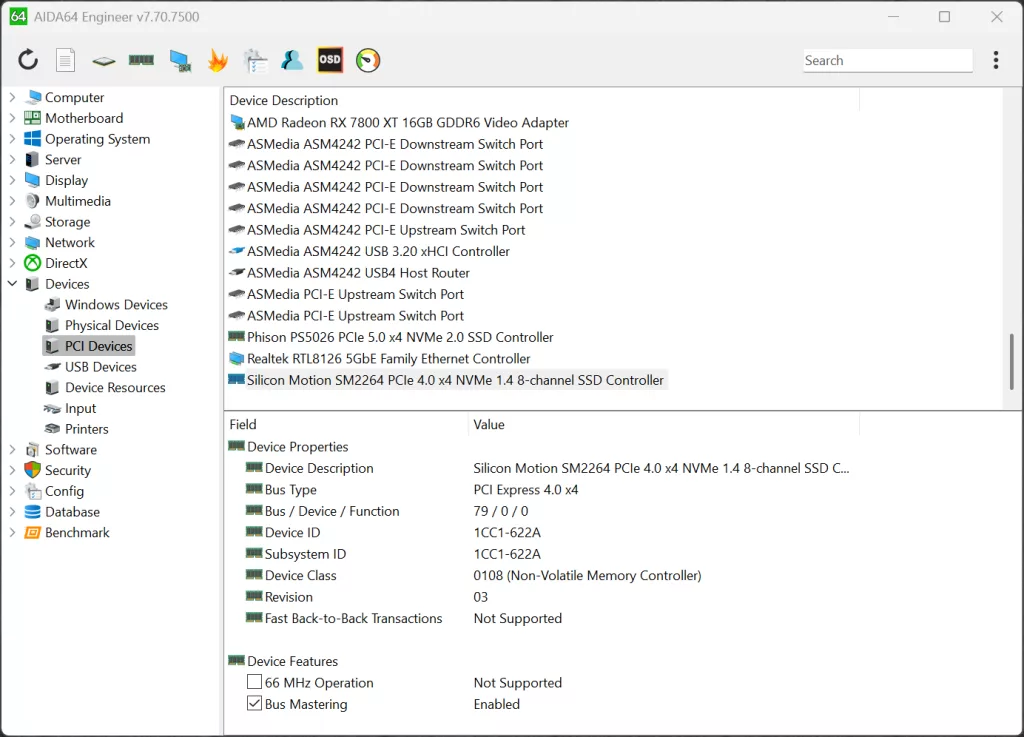
Upon investigation, we found that the ADATA SE920 1TB External Portable SSD is utilizing the Silicon Motion SM2264 PCIe 4.0 x4 NVMe 8-channel controller. This controller allows for up to 1,600MT/s 3D NAND flash, PCIe Gen4 x4, and NVMe 1.4. It is based on a quad-core ARM R8 CPU and the 12nm process technology. The current firmware version is A200V9KL, and we did check for a firmware update prior to testing.
ADATA SE920 1TB External Portable SSD Pictures


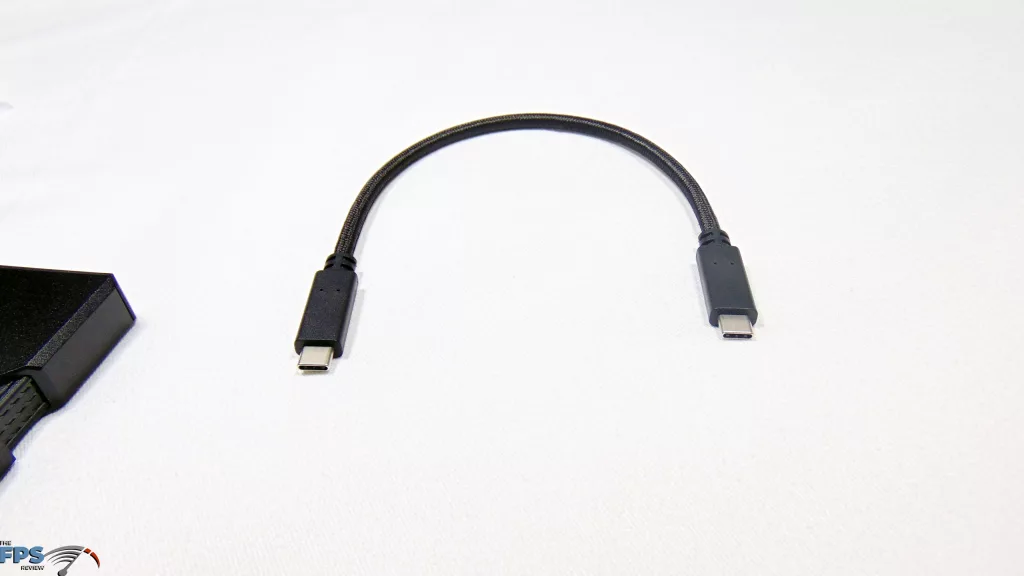
On the box, you’ll find the speed rating specified, as well as the interface connection type, which is important, and the capacity. There is also a logo to indicate that this SSD will work with the PS5 and XBOX Series X and S. Free backup software can be downloaded from ADATA that will work with this SSD. Inside the box is a simple manual and one Type-C cable that is 12″ in length.


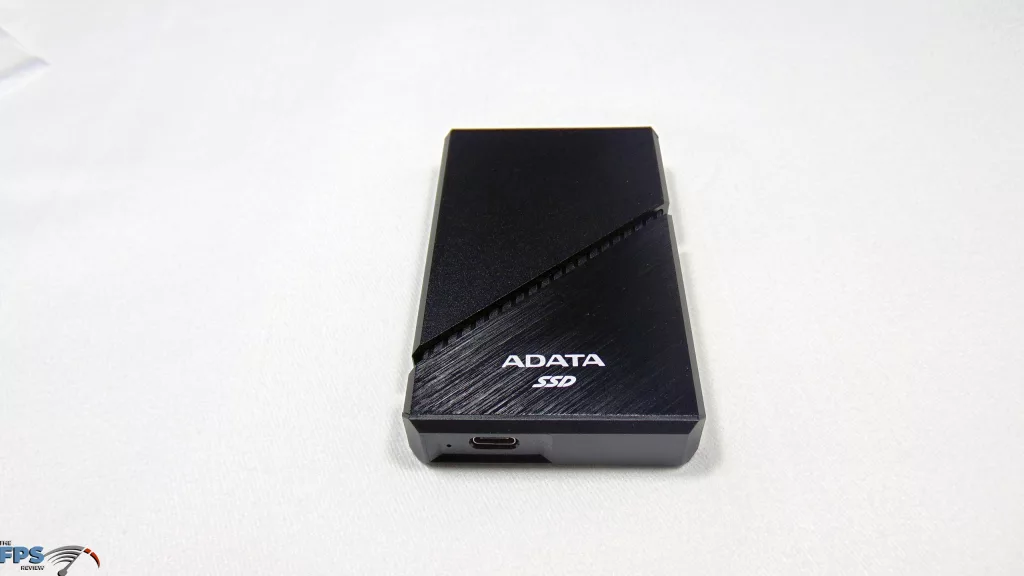
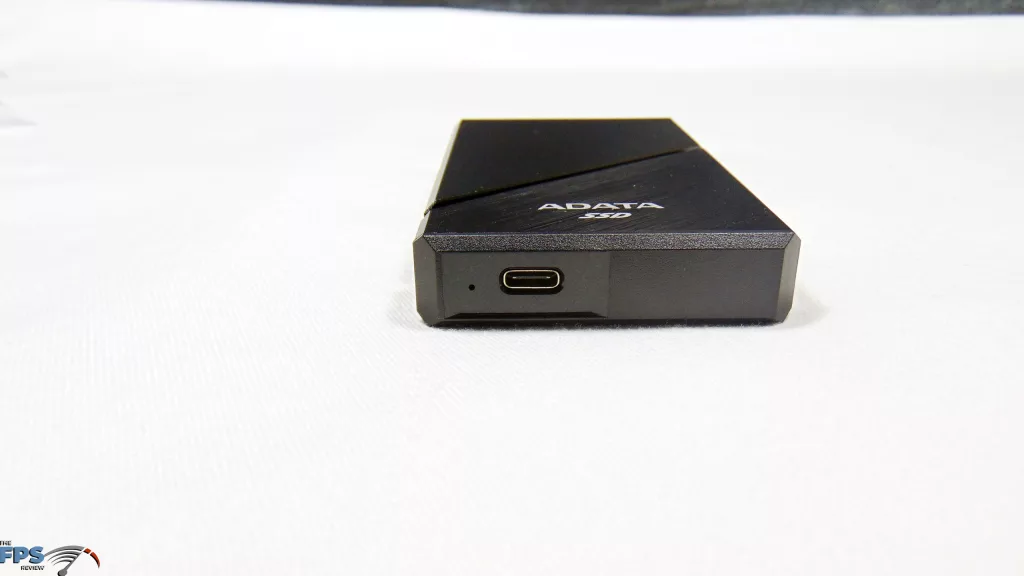
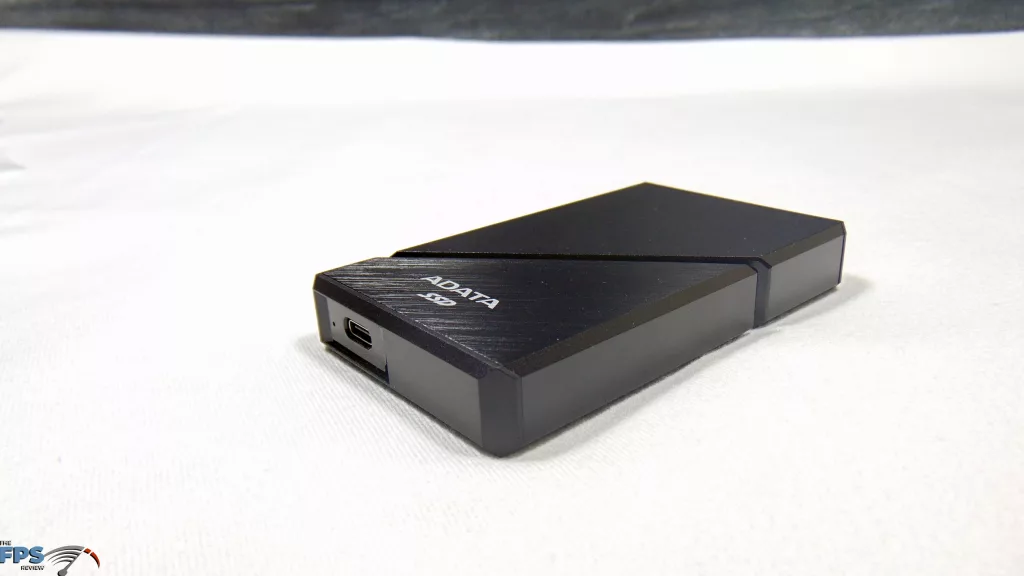
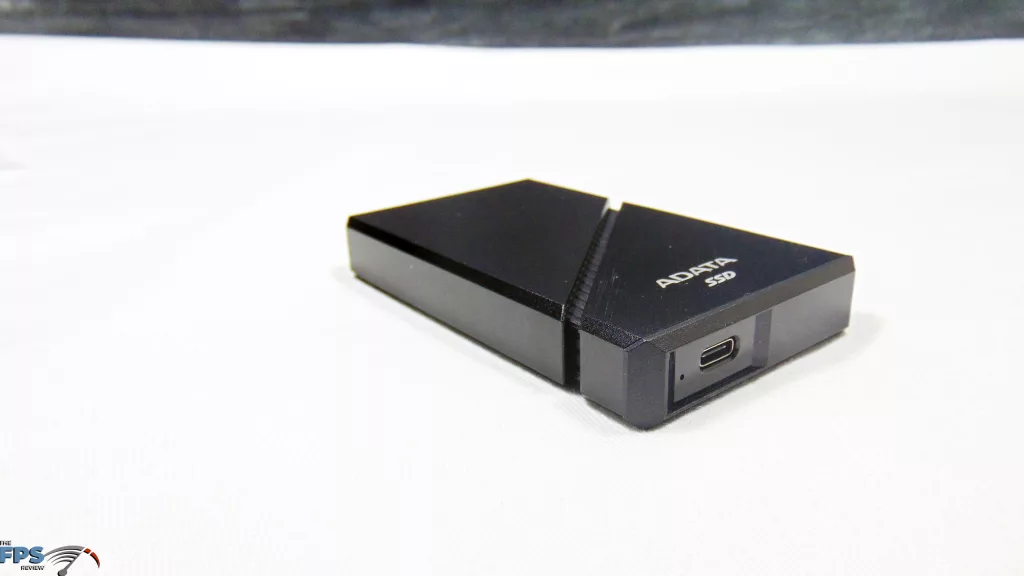
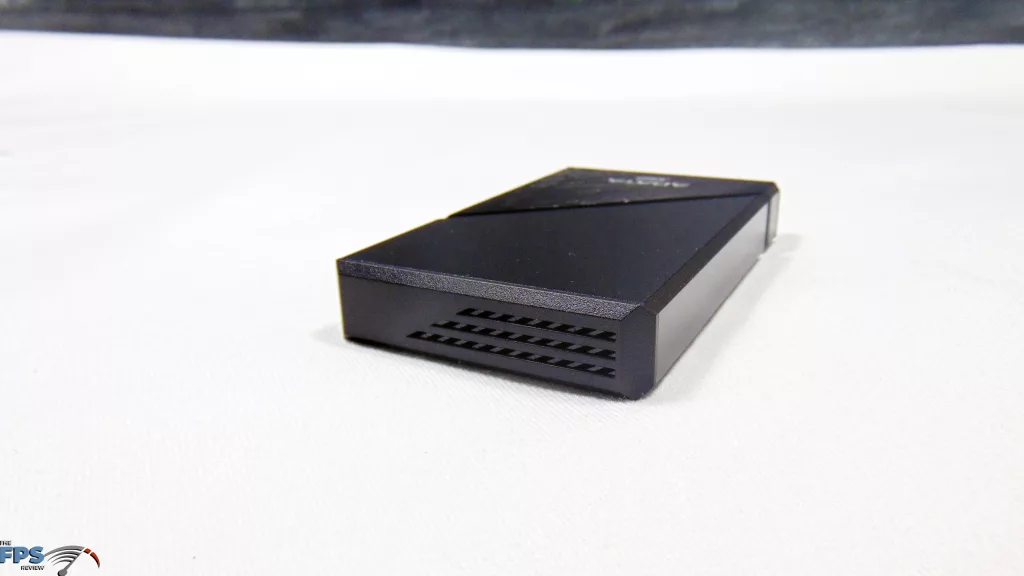
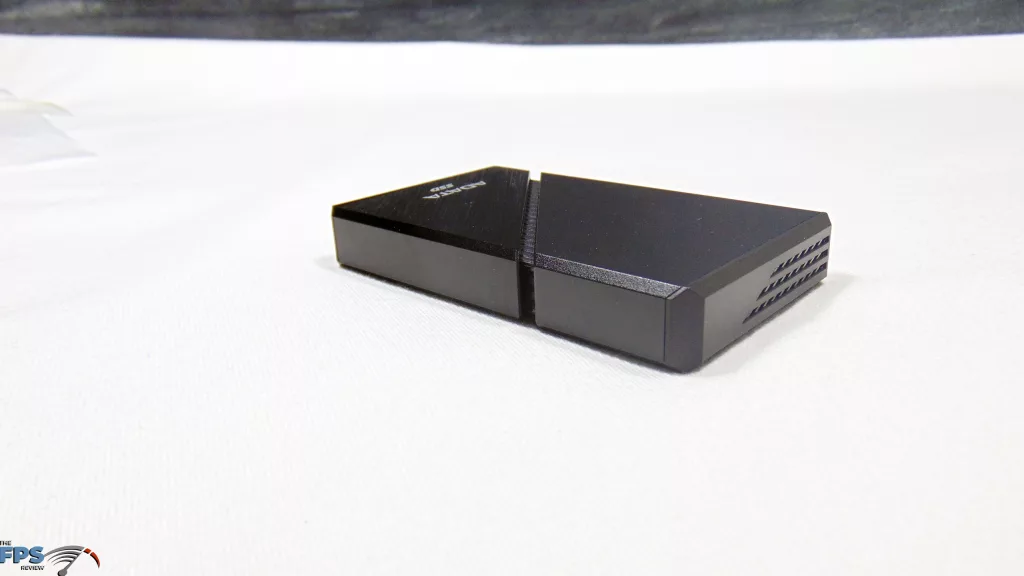
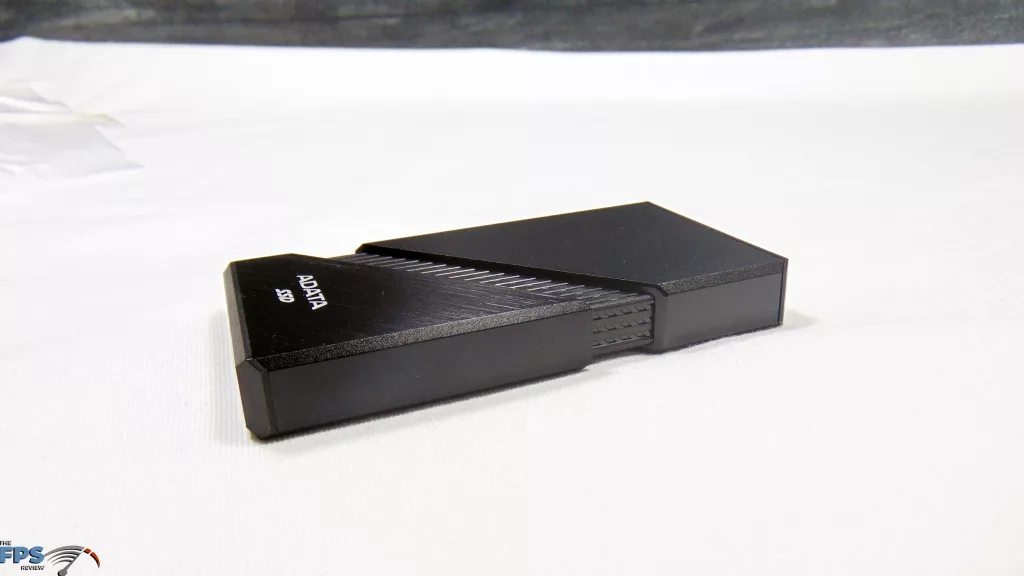
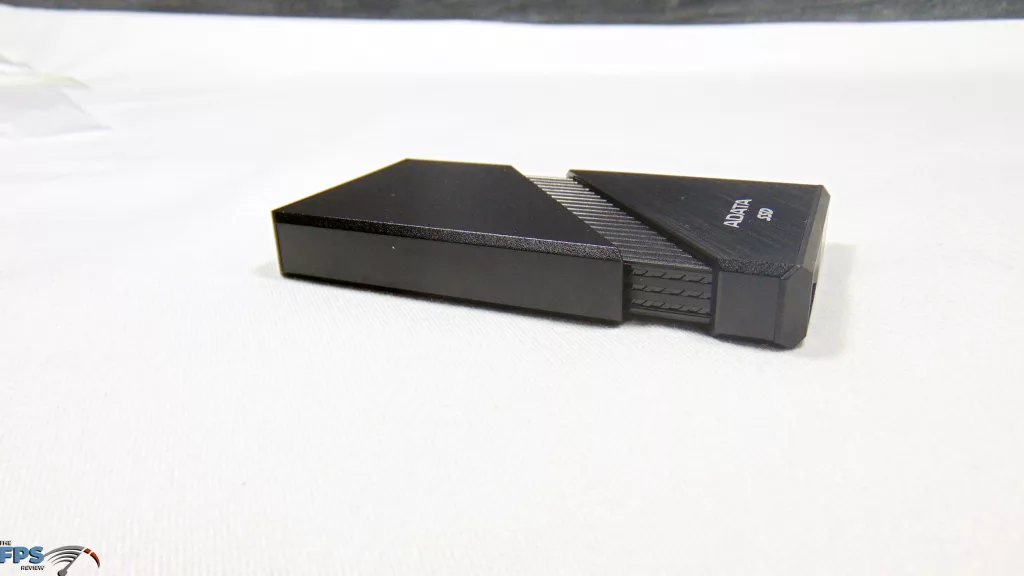
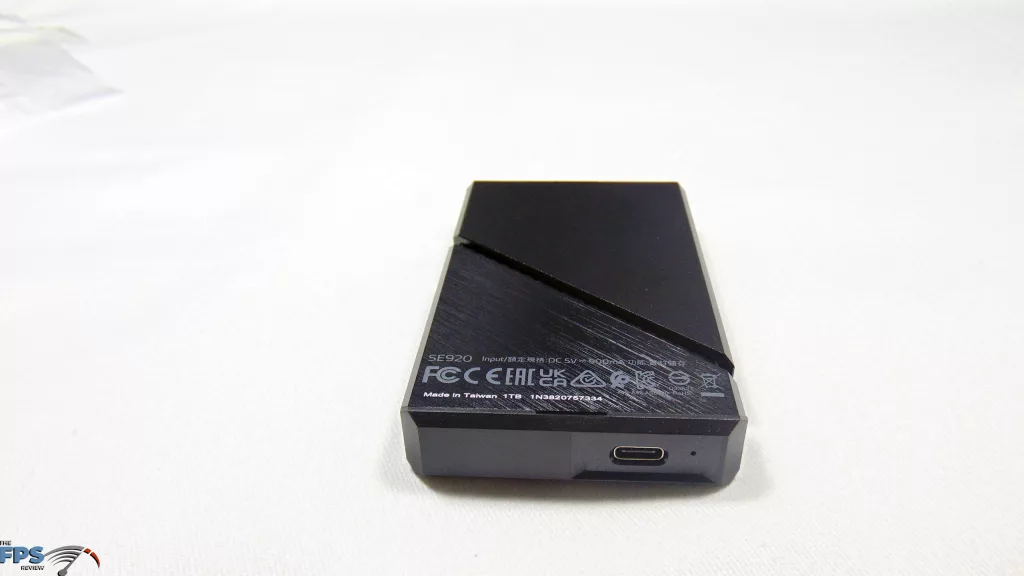
The dimensions of the ADATA SE920 vary because it has a special feature that allows you to expand or contract the shell. In the closed position, the SE920 measures 105mm x 64.2mm x 15.9mm (4.13″ x 2.52″ x 0.62″). In the open position, which enables the micro-fan inside, the unit measures 122.56mm x 64.2mm x 15.9mm (4.82″ x 2.52″ x 0.62″). It weighs 181.52g (6.4oz).
In terms of construction, the SSD feels solid from the base, with solid metal construction that helps in dissipating heat. However, the top shell part is plastic and wobbles in its place; it doesn’t feel solid. It wobbles because it has to allow for the actuation function. It easily presses down (closed) to run with the fan off, or de-press it and it rises upward (open) to enable the internal micro-fan. It is that upper part that moves, which wobbles and doesn’t feel altogether stable compared to the rest of the unit.
On the plus side, the fan is silent; you cannot hear it, and you can only barely feel air coming out of the vent, so it does not cause a lot of ruckus with that fan spinning. The Type-C connector is on the bottom end, and the air vent is on the top.
Windows External Storage Performance Policy
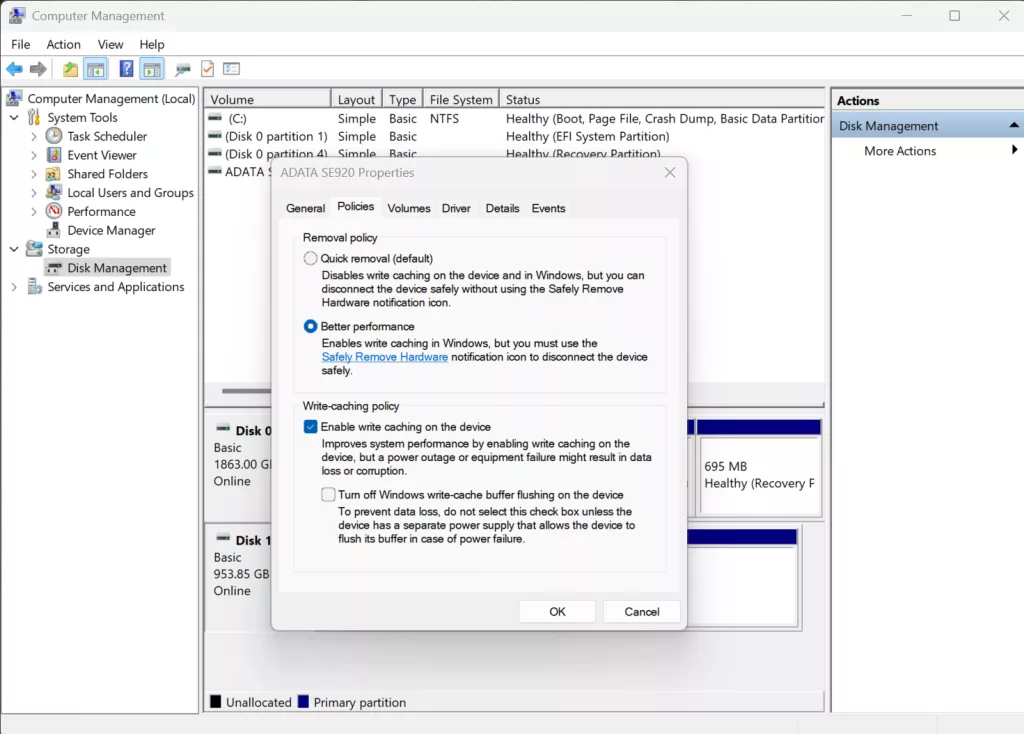
There is absolutely something very important you need to be aware of about how Windows (Win11 in our case) treats external storage devices. By default, the Windows External Storage drive policy is set to “Quick Removal.” Under the Quick Removal policy, it allows external devices to be quickly removed without having to “eject.” However, this has a detrimental write performance impact. You will need to manually go into the device Policies tab and enable the “Better Performance” option, which will also enable write caching. This is imperative, or else your performance will suffer, and we can demonstrate this below.
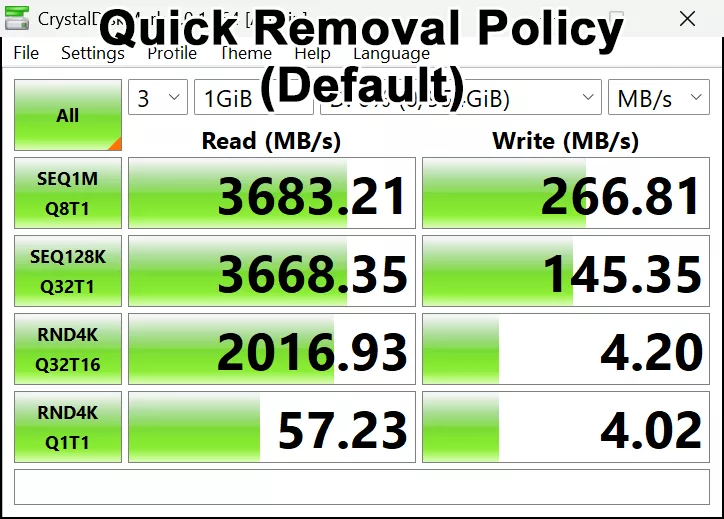
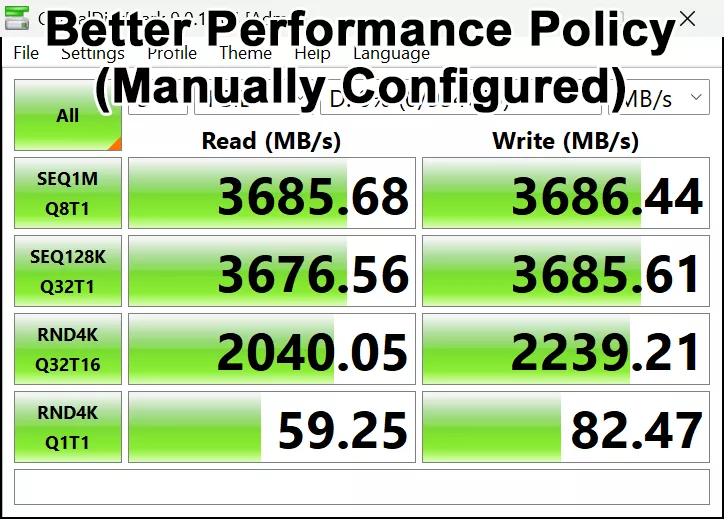
In the left screenshot, you can see CrystalDiskMark running with the Quick Removal default policy, and the write performance is absolutely demolished. By enabling the Better Performance policy in the right screenshot, the write performance is where it should be, and a lot faster than the default Quick Removal Policy. Therefore, in all of our testing today, we have the Better Performance policy enabled manually.
Test Setup

We are testing the ADATA SE920 1TB External SSD on an ASRock X870E Taichi Motherboard with an AMD Ryzen 9 9950X, and the external storage device is connected via the USB4 40Gbps Type-C connector. In our testing today, we will have a previously reviewed and tested MSI DATAMAG 20Gbps Magnetic Portable SSD storage device, also used in some comparisons, to give you an idea of how 20Gbps external storage compares to 40Gbps external storage.


